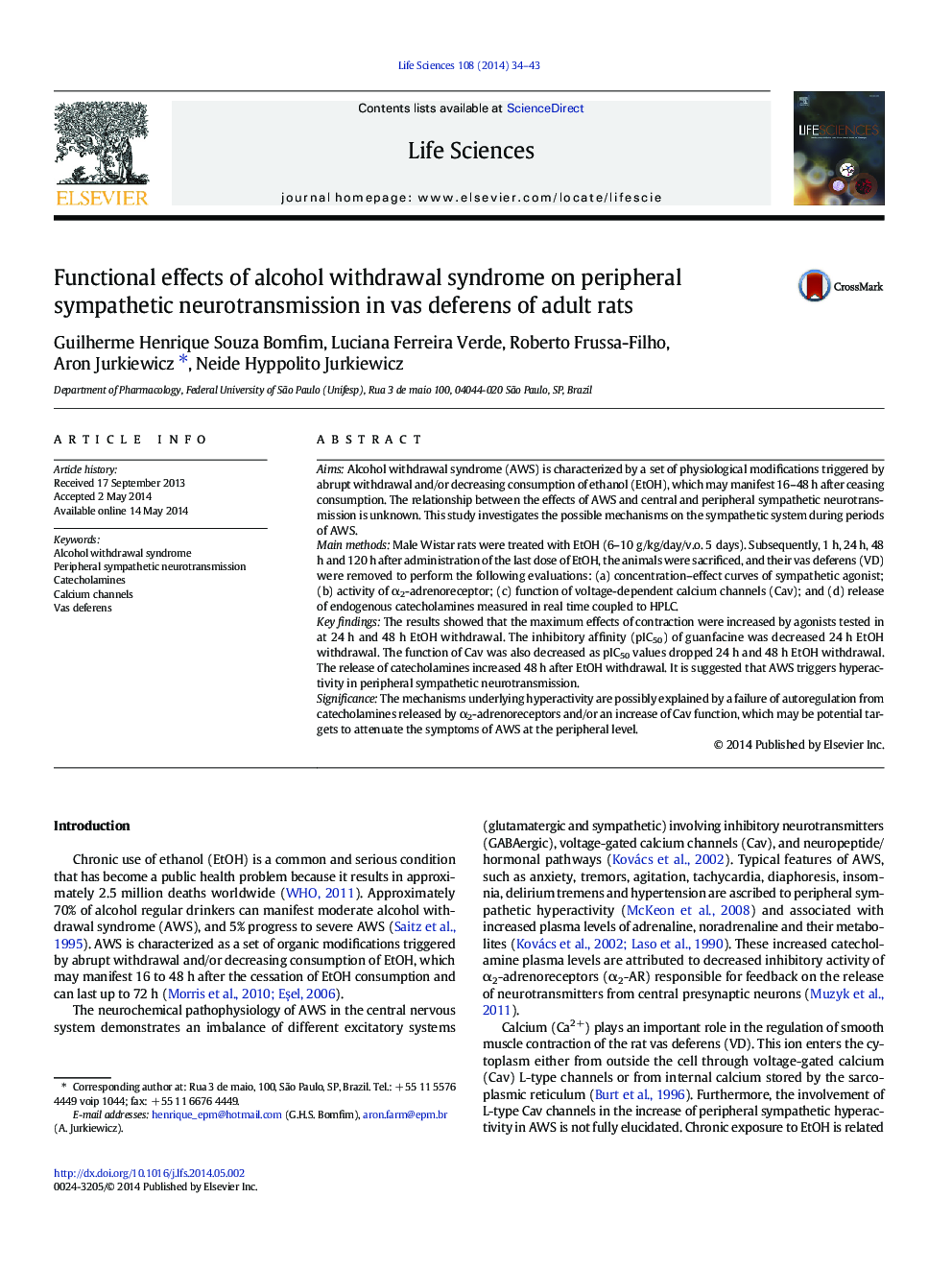| Article ID | Journal | Published Year | Pages | File Type |
|---|---|---|---|---|
| 2551228 | Life Sciences | 2014 | 10 Pages |
AimsAlcohol withdrawal syndrome (AWS) is characterized by a set of physiological modifications triggered by abrupt withdrawal and/or decreasing consumption of ethanol (EtOH), which may manifest 16–48 h after ceasing consumption. The relationship between the effects of AWS and central and peripheral sympathetic neurotransmission is unknown. This study investigates the possible mechanisms on the sympathetic system during periods of AWS.Main methodsMale Wistar rats were treated with EtOH (6–10 g/kg/day/v.o. 5 days). Subsequently, 1 h, 24 h, 48 h and 120 h after administration of the last dose of EtOH, the animals were sacrificed, and their vas deferens (VD) were removed to perform the following evaluations: (a) concentration–effect curves of sympathetic agonist; (b) activity of α2-adrenoreceptor; (c) function of voltage-dependent calcium channels (Cav); and (d) release of endogenous catecholamines measured in real time coupled to HPLC.Key findingsThe results showed that the maximum effects of contraction were increased by agonists tested in at 24 h and 48 h EtOH withdrawal. The inhibitory affinity (pIC50) of guanfacine was decreased 24 h EtOH withdrawal. The function of Cav was also decreased as pIC50 values dropped 24 h and 48 h EtOH withdrawal. The release of catecholamines increased 48 h after EtOH withdrawal. It is suggested that AWS triggers hyperactivity in peripheral sympathetic neurotransmission.SignificanceThe mechanisms underlying hyperactivity are possibly explained by a failure of autoregulation from catecholamines released by α2-adrenoreceptors and/or an increase of Cav function, which may be potential targets to attenuate the symptoms of AWS at the peripheral level.
